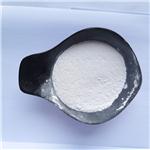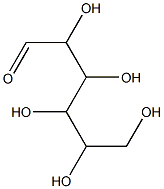Carboxymethyl Cellulose: Characteristics and Synthesis from Plant-Based Materials
Sep 6,2024
General Description
Carboxymethyl Cellulose is a versatile cellulose derivative with unique characteristics that are crucial for various industrial applications. Its rheological properties, including viscosity, pseudoplasticity, and viscoelasticity, significantly influence its functionality, allowing for easy flow in products like food, pharmaceuticals, and cosmetics. The synthesis of Carboxymethyl Cellulose has increasingly shifted towards plant-based materials, utilizing agricultural by-products such as banana pseudo-stems and corncobs, which are abundant and cost-effective sources of cellulose. This trend not only minimizes waste but also promotes environmentally sustainable practices, enhancing the biopolymer's versatility in applications ranging from food additives to biomedical uses.

Figure 1. Carboxymethyl Cellulose
Characteristics
Carboxymethyl Cellulose is a versatile cellulose derivative that exhibits unique characteristics crucial to its applications across various industries. One of the most significant properties of Carboxymethyl Cellulose is its rheological behavior, which encompasses its flow and deformation characteristics under applied stress. The three main parameters defining the rheological properties of Carboxymethyl Cellulose are viscosity, deformation under stress (stress-strain flow behavior), and the degree of substitution (DS). The viscosity of Carboxymethyl Cellulose is notably affected by its concentration; at low concentrations, it may display Newtonian fluid characteristics, whereas at higher concentrations, its non-Newtonian behavior becomes prominent. This ability to transition between different flow behaviors allows Carboxymethyl Cellulose to be employed effectively in applications like food packaging, pharmaceuticals, and cosmetics. 1
Rheological Properties
Rheology is fundamental in understanding how Carboxymethyl Cellulose acts under various conditions. It includes properties such as pseudoplasticity and viscoelasticity, directly influencing the performance of Carboxymethyl Cellulose in practical applications. The pseudoplastic behavior, or shear-thinning characteristic, of Carboxymethyl Cellulose is derived from its long-chain molecular structure, which aligns easily under shear stress, reducing viscosity and enhancing flow. This feature makes Carboxymethyl Cellulose particularly suitable for applications in food products such as sauces and dressings, allowing for easier spreading and improved texture. On the other hand, viscoelasticity, which combines the characteristics of both viscous and elastic behaviors, allows Carboxymethyl Cellulose to recover its original shape after deformation. These properties signify the importance of Carboxymethyl Cellulose in industries like biomedical applications, where it functions as a stabilizer or thickener in hydrogel formulations. 1
Viscosity and Its Importance in Applications
The viscosity of Carboxymethyl Cellulose is a critical factor impacting its functionality in various applications. Viscosity measures a fluid's resistance to flow and is inherently linked to the concentration and degree of substitution of Carboxymethyl Cellulose. High viscosity types are extensively utilized in the production of thickening agents in food processing, while low viscosity grades serve as effective moisture binders in different formulations. The viscosity of Carboxymethyl Cellulose can also be tuned through its molecular weight and synthesis conditions, enabling its application across diverse fields, including pharmaceuticals and textiles. In addition, the relationship between the degree of substitution and viscosity means that Carboxymethyl Cellulose with higher DS values tends to offer better solubility and stability, making it ideal for use in food additives, drug delivery systems, and cosmetic products. Overall, the comprehensive understanding of the characteristics and behavior of Carboxymethyl Cellulose underscores its significance and versatility in numerous industrial applications. 1
Synthesis from Plant-Based Materials
Role of Plant-Based Materials
The synthesis of Carboxymethyl Cellulose has increasingly shifted towards plant-based materials due to the growing limitations associated with traditional terrestrial cellulosic precursors. The primary issue with these conventional materials is their mixed composition, which often includes lignin, pectin, and hemicellulose alongside cellulose, necessitating energy-intensive pre-treatment processes to isolate cellulose. The average cellulose content in many agricultural by-products, such as fruit peels, straws, and corn cobs, ranges from 31% to 60%, presenting an opportunity for more sustainable and cost-effective production of Carboxymethyl Cellulose. Research indicates that the properties of Carboxymethyl Cellulose can vary significantly based on the precursor used, affecting its degree of substitution, viscosity, and water retention capabilities. This variability allows for tailored applications across diverse industries. Notably, cotton fibers, composed of approximately 95% cellulose, have been identified as a highly effective source for high-quality Carboxymethyl Cellulose synthesis. 1
Abundant and Sustainable Sources
One of the most significant advantages of utilizing plant-based materials for producing Carboxymethyl Cellulose is their wide availability and low cost. Agricultural wastes such as banana pseudo-stems and sago thwacks have been highlighted as rich sources of cellulose. Meenakshi et al. reported on the high cellulose yield from banana pseudo-stems, subsequently utilized by others to produce high-purity Carboxymethyl Cellulose. Similarly, corncobs, often discarded from maize processing, have gained attention, with significant quantities produced annually providing a substantial source for synthesis. Palm oil fronds also represent another low-cost precursor, contributing to high purity Carboxymethyl Cellulose production. Not only do these materials reduce waste from agricultural and industrial practices, but they also aid in creating more environmentally friendly production processes. Additionally, the utilization of invasive species like water hyacinth demonstrates the potential for Carboxymethyl Cellulose synthesis from underutilized or problematic plants, further enhancing the sustainability of this biopolymer's production. 1,2
Reference
1. Rahman MS, Hasan MS, Nitai AS, et al. Recent Developments of Carboxymethyl Cellulose. Polymers (Basel). 2021; 13(8): 1345.
2. Saputra AH, Qadhayna L, Pitaloka AB. Synthesis and characterization of carboxymethyl cellulose (CMC) from water hyacinth using ethanol-isobutyl alcohol mixture as the solvents. Int. J. Chem. Eng. Appl. 2014; 5: 36-40.
- Related articles
- Related Qustion
- Important chemical materials - sodium carboxymethyl cellulose Apr 8, 2022
Carboxymethyl cellulose (CMC) is obtained after carboxymethylation of cellulose. Its aqueous solution has the functions of thickening, film-forming, bonding, water retention
Perampanel is used alone or together with other medicines to treat certain types of epilepsy, such as partial onset seizures and generalized tonic-clonic seizures.....
Nov 12,2024APISuccimer is a lead chelator for oral administration and has also been used to treat mercury poisoning, albeit with limited efficacy.....
Sep 6,2024DrugsCarboxymethyl cellulose
9000-11-7You may like
Carboxymethyl cellulose manufacturers
- Carboxymethyl Cellulose / CMC
-

- $80.00 / 1kg
- 2024-11-12
- CAS:9000-11-7
- Min. Order: 1kg
- Purity: 99%
- Supply Ability: 20ton
- Carboxymethyl cellulose
-

- $30.00 / 1kg
- 2024-10-25
- CAS:9000-11-7
- Min. Order: 1kg
- Purity: 0.99
- Supply Ability: 20 tons
- Carboxymethyl cellulose
-

- $0.00 / 1KG
- 2024-10-17
- CAS:9000-11-7
- Min. Order: 1KG
- Purity: 99%
- Supply Ability: 500000kg






